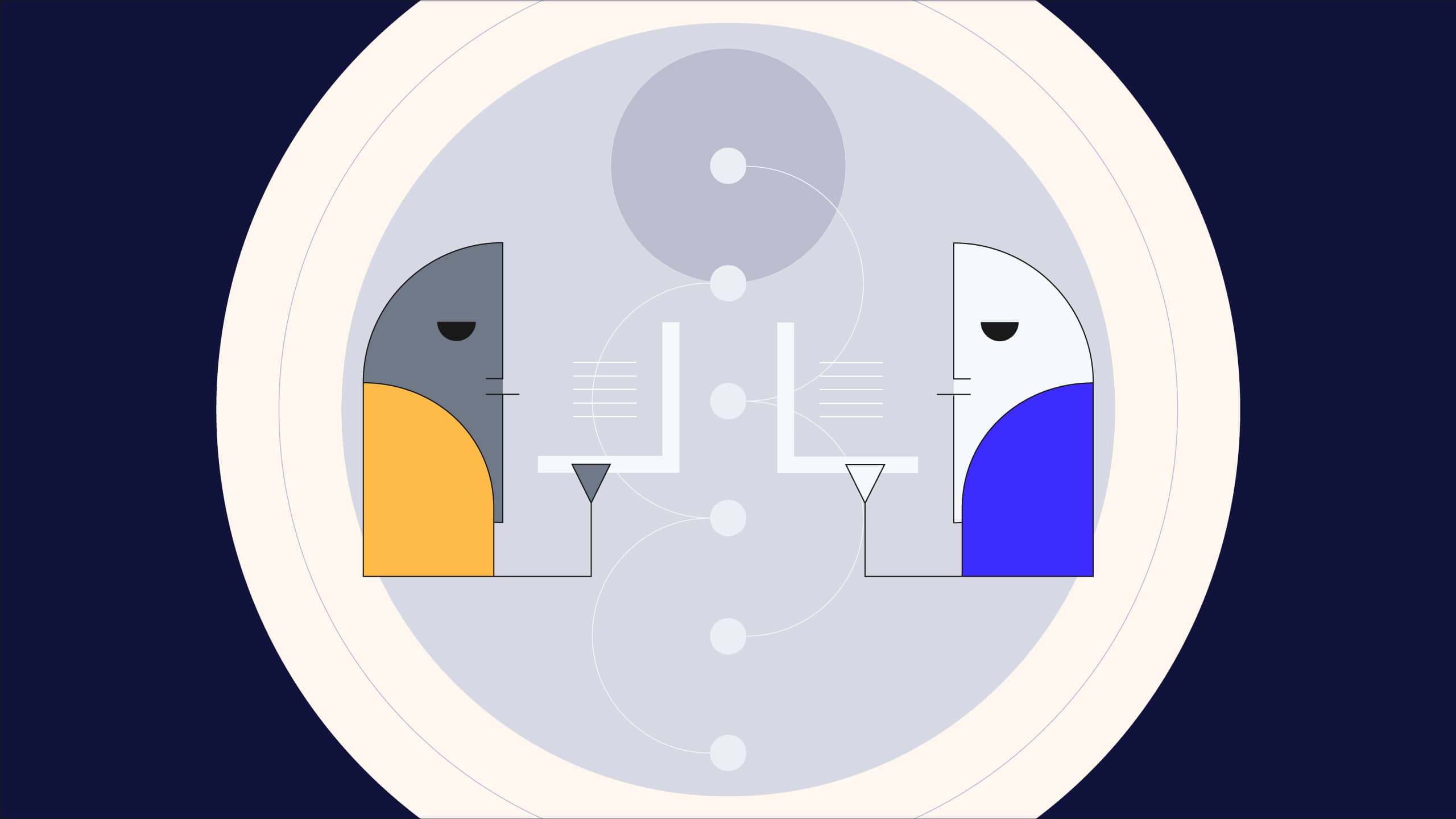Asynchronous vs. synchronous learning: for remote learner engagement, choose something in between
Feb 21, 2022 by Nomadic Team

L&D professionals often split learning solutions into two major categories: synchronous and asynchronous. We’ve found that the most impactful learning actually sits somewhere in between: semi-synchronous learning.
Asynchronous learning vs. live, synchronous learning: how to choose?
Asynchronous learning allows learners to explore learning content on their own time. One example is click-next e-learning, where employees proceed through the modules individually, entirely at their own pace. Meanwhile, synchronous learning, sometimes called live learning, demands that learners log in at a specific time, whether that's to attend Zoom classes, workshops, or seminars, or to participate in some other live fashion with an instructor or other learners.
Asynchronous learning is convenient for learners in different time zones or those with radically different work schedules. It also accounts for different learning paces, giving learners free reign over the speed at which they move through the learning modules. Unfortunately, many asynchronous learning solutions have dismal enagement and completion rates: consider that by some measures, completion rates for MOOCs hover around three percent. Synchronous learning, on the other hand, is thought to drive better engagement. Yet it doesn't scale well, and provides real logistical hassles for globally distributed teams. What's more, in a world of Zoom fatigue, even live learning engagement is becoming a real problem for many organizations, too. We hear it all the time from our clients: it's so hard to keep our learners engaged. No one's attending the sessions. No one is making time for learning.
In this digital learning landscape, what can L&D do?
Semi-synchronous learning: the best of both worlds
Fortunately, there's a third option that sits in between asynchronous and synchronous learning, and we find it works really well for remote and hybrid teams. We call it semi-synchronous learning.
The semi-synchronous model allows learners to get the advantages of asynchronous communication––flexibility, time to be think through ideas and responses, a written record of the great ideas that emerge––while also benefiting from the motivation, community atmosphere, and intellectual spark that comes from engaging with the material at the same time as their colleagues.
What does this look like in practice? A lot like the digital tools many of us have already been using for years. Interestingly, instant messaging solutions like Slack, Whatsapp, and Teams, or social networking sites like Facebook and Twitter, occupy a similar gray area between synchronous and asynchronous communication.
Our cohort-based learning Academy is one example of semi-synchronous learning. In Nomadic, learners engage with the content in a self-directed fashion, on their own time, when it works best for them. But our Programs are also time-bound, with a start and end date for each learning cohort. This means that though every learner moves through the Program at their own pace, they’re doing so within the same rough timeframe as their fellow cohort members.
Semi-synchronous learning works really well for cohort-based learning models, a burgeoning category that's gaining real popularity as L&D realizes the power of this deeply social learning solution. While cohort members still get the camaraderie of being part of a tight-knit learning group and exploring the material together, they can do so on their own time, on a schedule that's convenient for their time zone and their working style.
Managers in Taipei should be sharing ideas and insights with their colleagues in Chicago. But they shouldn’t have to wait for those colleagues to be online to do so. While any solution that requires synchronous lessons or tasks is inevitably going to create inequities, challenges, and inconsistencies as it scales across globally distributed teams, semi-synchronous learning can help these global teams stay connected, providing the optimal combination of both individual convenience and team collaboration for all cohort members.
Learner engagement and semi-synchronous learning
This all adds up to a learning solution with very strong learner engagement. Because learners are so used to interacting semi-synchronously with the digital tools they use every day, this style of learning tends to come to them very naturally, leading to easy adoption. And because learners are socially motivated, any method that gets them into conversation with other learners helps them stay motivated (and helps them feel accountable, too), especially when compared to click-next e-learning, where employees are simply moving through modules alone.
At Nomadic, we see this in action. Semi-synchronous social interaction is the core of the learning experience in our Academy. Learners log into the Academy in the flow of their work, exploring the multimedia learning content, reacting to their peers’ comments and insights, and deepening their thinking by refracting their understanding of the content through the perspectives of their fellow learners. Cohort members discuss how the learning content applies to their goals and tasks. They workshop ideas together. They dig deep and get vulnerable. As they share their struggles and victories with their peers, they create connections between the learning content and their lives.
From learner engagement to employee engagement
These connections make the learning more engaging, but even better, our clients frequently tell us that they've also seen a correlation between learner engagement and employee engagement: the more engaged learners were with the Academy, the more likely they were to be engaged with the organization, too. In this way, semi-synchronous learning opens a wealth of possibilities for organizations to not only transform their workforce's capabilities, but also to transform their connection with their teammates, their feelings about their organization, and even their vision of their work.
All because it puts them into conversation with each other in a way that makes sense for how teams work today.
How did AB InBev drive learner engagement with semi-synchronous learning?
To explore what semi-synchronous learning looked like in action at one organization, check out our case study with AB InBev. The company’s marketing organization needed leaders at all levels to become more consumer-centric and agile to achieve organic growth, but their current digital solution wasn't up to the task. Switching to semi-synchronous cohort-based learning led to unprecedented levels of learner engagement and, ultimately, major transformation across the sprawling organization of 2,000 marketers in more than 40 countries.
It's a fascinating learning story––get your free copy today to learn more.
Ready to dive deeper into cohort-based learning?
Interested in Nomadic’s cohort-based academies? Learn about our approach, or get in touch to request a demo. We'd love to hear from you!



